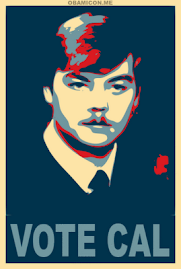Thursday, November 19, 2009
Light and Shadow
I love this painting. I wish I knew the artist. I suspect it comes from the Dutch Masters. They did amazing things with light and shadow combining the elements into an almost photo-realistic portrait.
Painted in 1833, the portrait depicts the execution of the young Jane Grey (1537 - 54) who was nominated by her cousin Edward VI to be England's next Protestant monarch. However, the Catholic Mary I, who had a greater claim to the throne (she was Edward's sister and Henry VIII's eldest daughter), had other plans. After reigning for only nine days, Lady Jane was deposed by Mary and was executed the following year. It is the purely tragic figure of Jane that keeps her memory alive in the British conscience - she was young, intelligent and a political pawn whose destiny was out of her control.
The painting shows a blindfolded Lady Jane about to be executed in one of the chambers of the Tower of London. She is being led to the block by Sir John Brydges who was Lieutenant of the Tower at the time. The executioner stands to the right of the painting and two grieving ladies-in-waiting are to the left. One of the women is on her knees, the other has her back to the audience, hands plaintively pressed against the wall in despair. Under the block is a mound of hay ready to soak up the blood of the young executee.
Subscribe to:
Post Comments (Atom)




































































































%20SDTB.jpg)











4 comments:
Damn. If I lived to be a thousand I would never be able to paint like that.
It's "The Execution of Lady Jane Grey" by Paul Delaroche.
So beautiful and disturbing. Interesting how the big cloaked figure, if we judged just by his gestures, is comforting or helping Lady Jane--but we instinctively see him as deadly sinister, maybe because we don't see his face. And her blindfold, the fact that she can't see her own fate, although she must have known it, seems very cruel.
Briliant ovservation Margaret. The contrast between innocence and guilty is so clear here.
Post a Comment